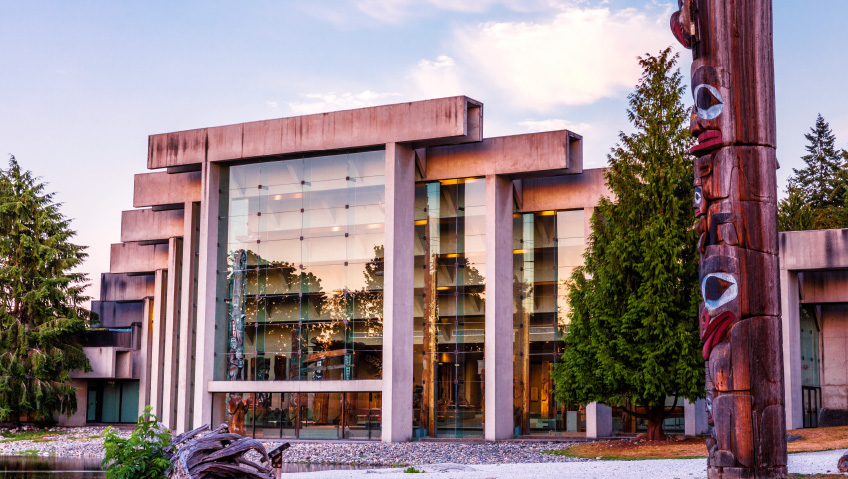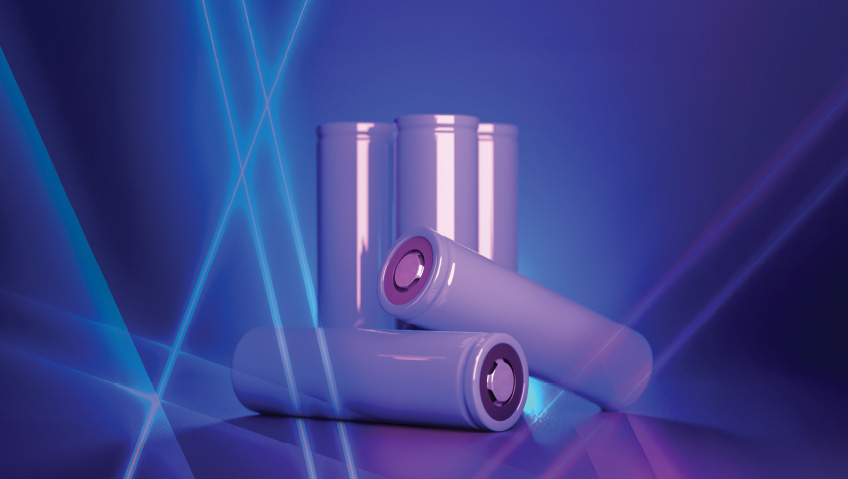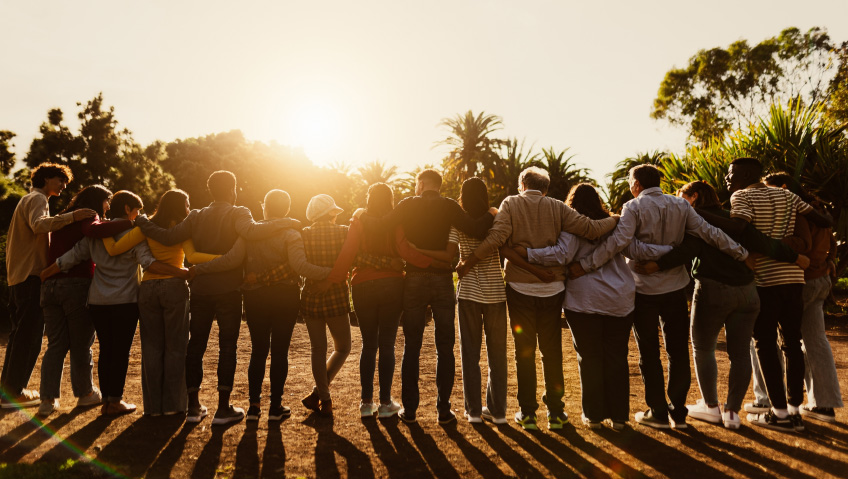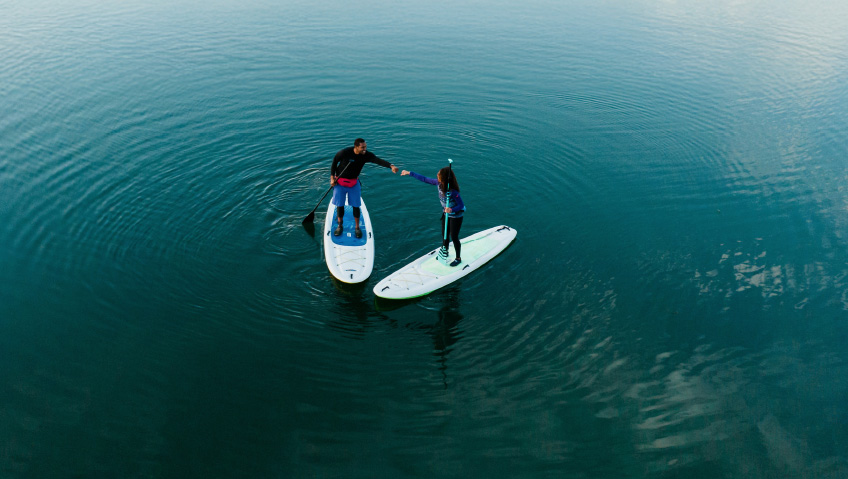The Museum of Anthropology (MOA) at the University of British Columbia is not just a place where history is preserved; it is a dynamic institution that continually evolves in response to the communities it serves.
Established in 1947, MOA was founded with the goal of fostering understanding and appreciation of world cultures, with a particular focus on the artistic and cultural traditions of Indigenous peoples in British Columbia and beyond. The museum’s collection has grown significantly over the decades, now housing more than 50,000 ethnographic objects. Its distinctive architecture, designed by renowned Canadian architect Arthur Erickson in 1976, was inspired by traditional Northwest Coast Indigenous structures, creating a space that honours and respects the cultural heritage held within.
MOA has become a global leader in the study and preservation of Indigenous artifacts and cultural expressions, supporting connections between historical traditions and contemporary Indigenous voices. Over the years, the museum has also expanded its role as an educational institution, working with researchers, students, and community members to deepen the understanding of cultural heritage and anthropology. Through innovative exhibitions, research initiatives, and extensive collaborations, MOA continues to redefine what it means to be a modern museum.
In addition to its educational efforts, the museum frequently hosts workshops, artist talks, and community-driven events that engage visitors in meaningful dialogue about cultural heritage and contemporary issues facing Indigenous peoples. At the heart of its mission is a deep and enduring commitment to working with Indigenous peoples and other global communities, ensuring that their voices and perspectives are not only heard but shape the museum’s very identity.
MOA is situated on the unceded, ancestral lands of the hən̓q̓əmin̓əm̓-speaking Musqueam people. Recognizing this, the museum has long prioritized engagement with Indigenous communities, working together to develop collections, exhibitions, and programs that reflect the values and needs of the people whose heritage they represent.
“Musqueam has always reached out to this museum,” says Susan Rowley, Director at MOA. “They’ve been incredibly generous in asking us to be self-reflective and self-critical. They challenge us with questions like, ‘Why do you do that? What is the purpose of that? Who are you to speak for Indigenous peoples?’ These conversations are essential in keeping us accountable.”
This ongoing dialogue has led to significant transformations at MOA, including the recent reimagining of the permanent Pacific Northwest galleries. The process involved working closely with an Indigenous advisory committee and rights and title holders to ensure the exhibits accurately reflect Indigenous perspectives. “There are poles and other cultural belongings here that are living entities for families,” Rowley explains. “So, working with communities to discuss what can be shared and how it should be shared is crucial.”
Beyond public exhibitions, the museum fosters meaningful engagement through programs like the Indigenous Internship Program, which provides training for Indigenous community members interested in cultural heritage work, and a Collections Access Program, which facilitates Indigenous people to spend time with belongings housed at the museum or bring them back to their communities for ceremonial or research purposes.
Additionally, MOA has been expanding its efforts to recruit more Indigenous staff members and develop collaborative research projects and reciprocal learning opportunities that support Indigenous scholars and artists to contribute their knowledge and perspectives. Through these partnerships, the museum is supporting Indigenous people’s rights to shape the narratives that are shared with the public and working with them to preserve heritage.
MOA also recognizes that reconciliation is an ongoing process. The museum actively works with Indigenous groups to ensure repatriation efforts are conducted respectfully and appropriately. Recent efforts have focused on returning cultural belongings to their rightful communities, reinforcing the museum’s role as a facilitator of cultural justice.
In addition to its work with Indigenous communities, MOA has recently undergone significant seismic upgrades to protect the collections housed at the museum. The project was prompted by a university-wide seismic scan that identified the museum’s Great Hall, home to massive totem poles and carvings, as particularly vulnerable to collapse in an earthquake.
“The question became: how could you stabilize that space?” Rowley recalls. “The works in that hall breathe in that space. The architecture, designed by Arthur Erickson, is strong and meaningful. Anything invasive, like a steel substructure, would have disrupted that.”
Ultimately, the solution was to dismantle and completely rebuild the structure using base isolation technology, which allows the building to absorb seismic movement. While the process required MOA to close to the public for 18 months, it provided a unique opportunity to redesign the Pacific Northwest galleries in collaboration with Indigenous communities. “People have a deep connection to the belongings in that space,” Rowley shares. “These are not just artifacts—they are connected to living peoples, their ancestors, and their futures. Protecting them was paramount.”
The base isolation system, which allows the building to move independently of the ground motion, ensures that in the event of an earthquake, the structure will remain intact, its invaluable artifacts safeguarded. This extensive project also included upgrading the museum’s environmental controls, reinforcing other structural elements, and enhancing visitor safety measures.
For 2025, MOA is preparing a diverse slate of exhibitions that will showcase a range of cultural and artistic expressions. Among them is Rebecca Belmore’s Value, set to open in May. Belmore, a celebrated Anishinaabe artist, is known for her powerful works that address themes of colonialism, resistance, and identity. This exhibition will feature a selection of her installations and performances that challenge conventional narratives about Indigenous experiences in Canada.
Additionally, Ellen Neel’s Kakaso’las exhibition will honor the life and work of the groundbreaking Kwakwaka’wakw artist. This exhibit, curated by fourth-year Museum Studies students at UBC, will run from May to Thanksgiving weekend.
Later in the year, Entangled Territories will explore Tibet’s cultural and political landscape through art and material culture, while Everyone Says I Look Like My Mother will examine contemporary weaving practices and the intersection of traditional and digital techniques, featuring the work of weaver Meghann O’Brien.
“These exhibitions, typical of the kinds MOA is known for, highlight and showcase diverse artistic traditions,” Rowley says. “We are honored to provide a platform for these important stories.”
The Museum of Anthropology at UBC stands as a testament to the power of cultural preservation, community collaboration, and ongoing learning. Through its dedicated work with Indigenous communities, extensive seismic upgrades, and diverse exhibitions, MOA exemplifies what a modern museum can and should be.
As museums worldwide grapple with questions of representation, reconciliation, and sustainability, MOA offers a model of how institutions can remain relevant and responsive. By continually evolving and listening to the voices of those whose histories it preserves, the museum ensures that its impact extends far beyond its walls.
For those seeking to understand the depth and richness of Indigenous cultures, as well as the evolving role of museums in today’s society, MOA provides an unparalleled experience. Whether you’re a first-time visitor or a longtime supporter, a trip to the Museum of Anthropology is not just a journey through history; it is an invitation to engage with the living narratives of the past and present, shaping a more inclusive future for all.






